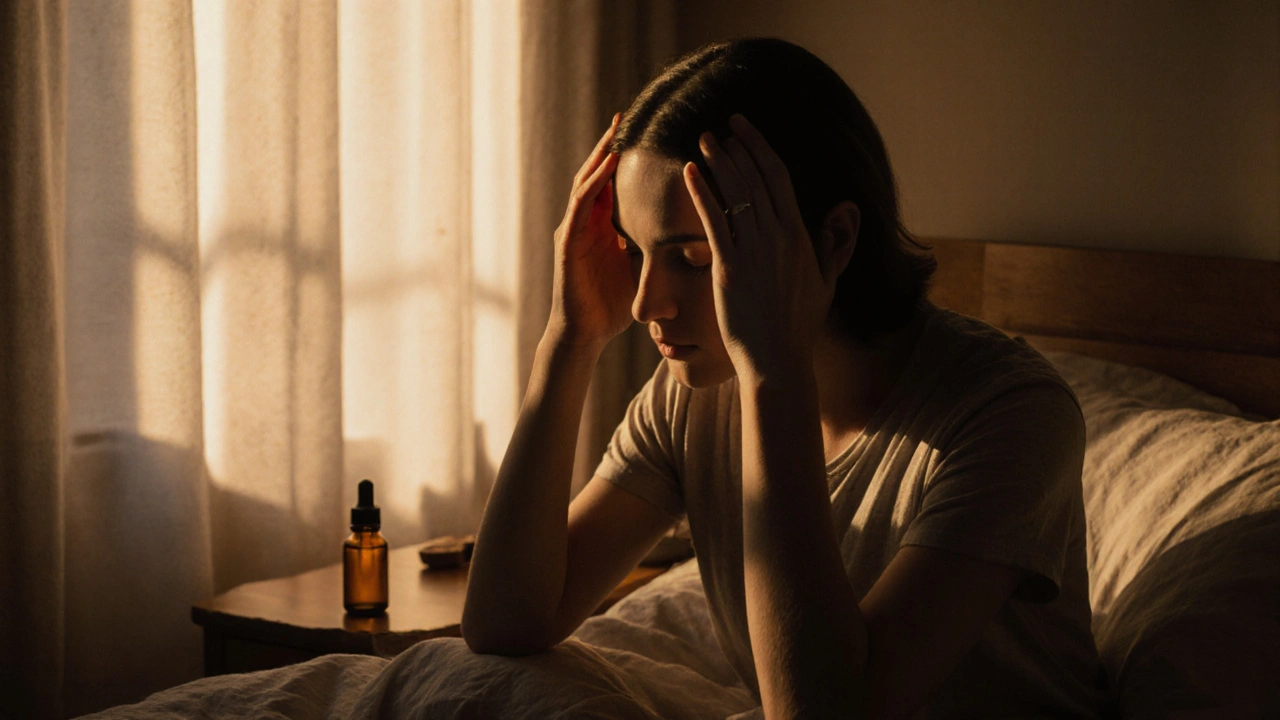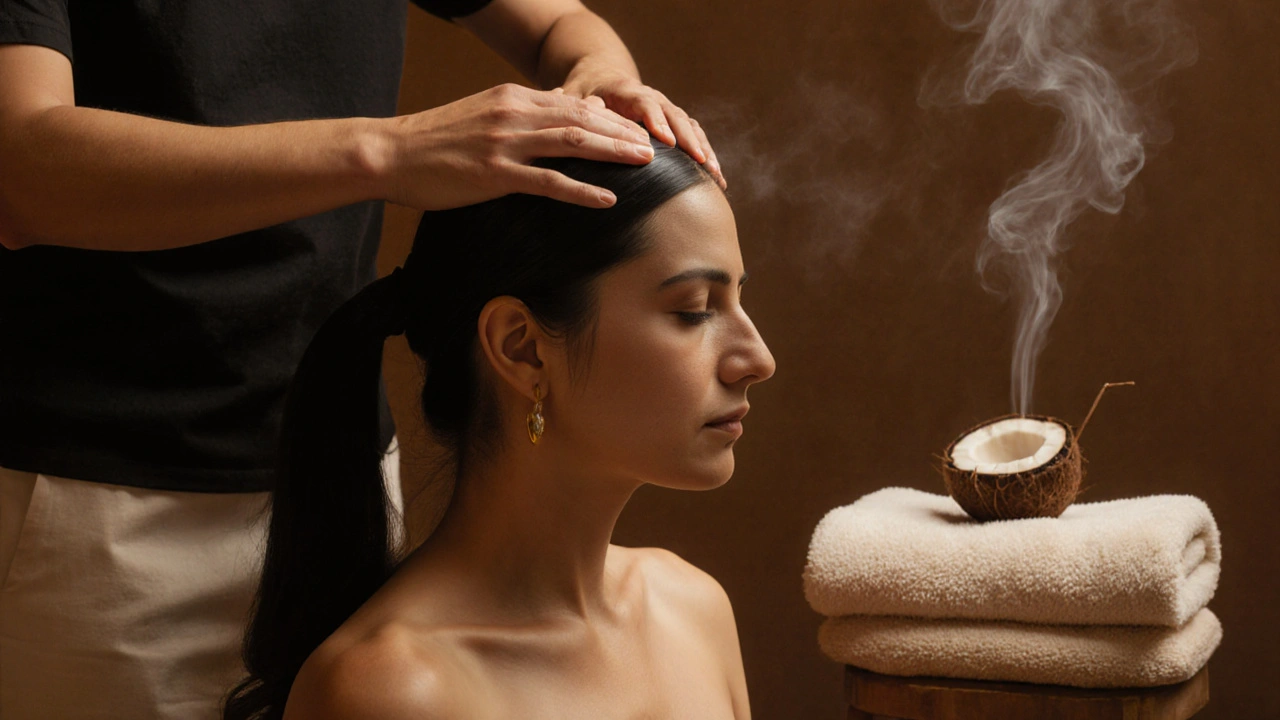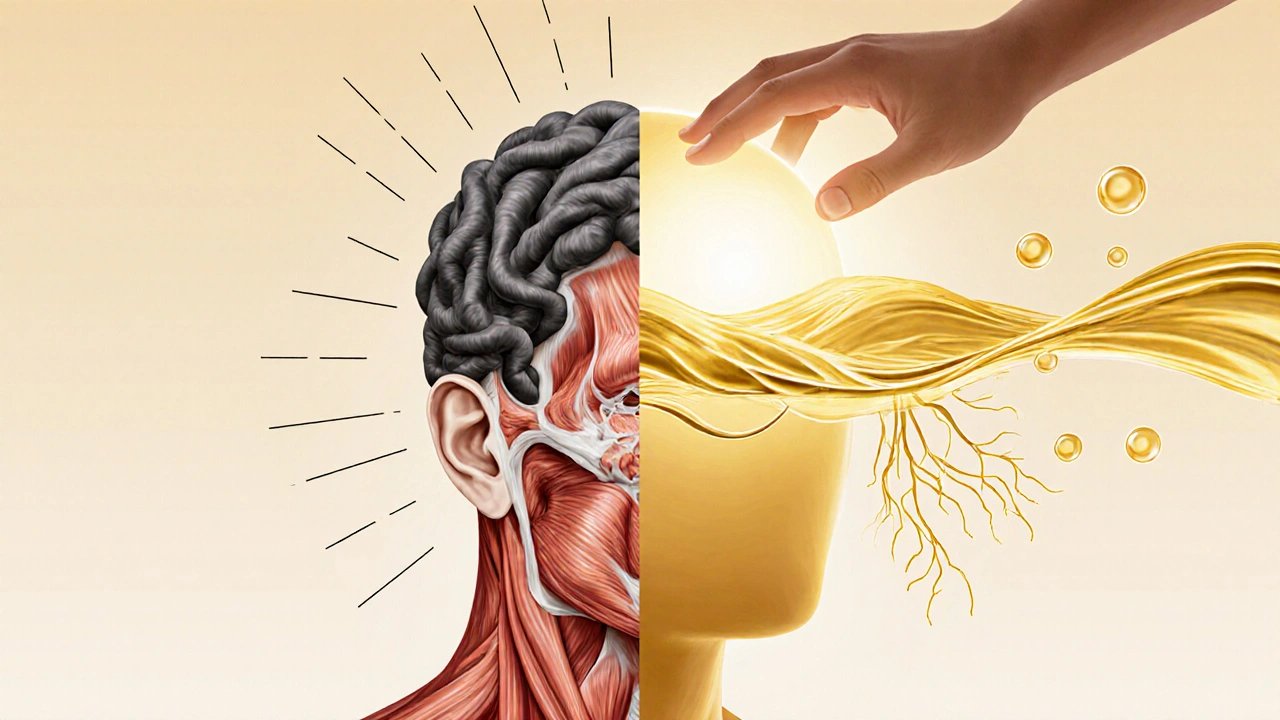From Tension to Tranquility: The Science and Practice of Head Massage

Most people think of massage as something you get on your back, shoulders, or feet. But the real magic? It starts at the top of your head.
Why Your Head Holds So Much Stress
Your head isn’t just skin and hair. It’s packed with nerves, muscles, and blood vessels that carry the weight of your daily stress. Think about it: when you’re overwhelmed, do you rub your temples? Clench your jaw? Tense your scalp? That’s not random. It’s your body screaming for relief.
Studies show that chronic tension in the scalp and neck muscles is directly linked to tension headaches and even migraines. A 2023 study in the Journal of Clinical Medicine found that 78% of participants who suffered from frequent headaches reported noticeable improvement after just four weekly head massages. Not drugs. Not surgery. Just hands on the scalp.
The muscles around your skull-like the temporalis and occipitalis-are often ignored. They don’t get stretched like your hamstrings or massaged like your lower back. But they hold onto stress like a clenched fist. And that tension doesn’t just stay put. It pulls on your neck, triggers nerve pathways, and sends pain signals straight to your brain.
How Head Massage Works-Not Magic, But Biology
Head massage isn’t about relaxation tricks or energy flows. It’s about biology you can feel.
When you apply gentle pressure to your scalp, you stimulate the vagus nerve-the main nerve connecting your brain to your body’s rest-and-digest system. This triggers a drop in cortisol, the stress hormone. Your heart rate slows. Your breathing deepens. Your muscles loosen.
At the same time, blood flow to your scalp increases by up to 30% during a proper head massage. That means more oxygen and nutrients reach your hair follicles, your skin, and even your brain. No, it won’t regrow lost hair overnight-but it does support healthier growth by improving circulation.
And then there’s the nervous system reset. Your head is covered in over 100,000 nerve endings. When you touch them in a slow, rhythmic way, your brain interprets it as safety. It stops scanning for danger. It stops bracing. It lets go.
What a Real Head Massage Feels Like
A good head massage doesn’t feel like a quick scratch. It’s slow. Deliberate. Deep.
Start at the forehead. Use your fingertips to make small circles, moving from the center out toward your temples. Don’t press hard-think of pressing into soft clay, not squeezing a lemon.
Then move to the temples. Use the pads of your index and middle fingers. Gently press and hold for three seconds. Release. Repeat five times. This is where most people store stress. You’ll feel it melt.
Now work your way back. Use your thumbs to trace along the hairline at the base of your skull. Apply light pressure and move side to side. Feel the tight band of muscle there? That’s the occipitalis. It’s often the source of those dull, constant headaches.
Finally, run your fingers through your hair-not like you’re washing it, but like you’re combing with your hands. Use slow, sweeping motions from front to back. It feels like a wave of calm rolling over you.
Do this for 10 minutes a day. No tools needed. No oil required. Just your hands and five quiet minutes.

Indian Head Massage: More Than Just Tradition
Indian Head Massage, or Champissage, isn’t just a spa trend. It’s a 4,000-year-old practice from Ayurveda. It’s not just about the scalp-it includes the neck, shoulders, and upper back. That’s important.
The reason it works so well is because it treats the head as part of a system, not an island. Tight shoulders pull on your neck. Tight neck muscles press on your skull. It’s all connected.
Traditional Indian Head Massage uses sesame or coconut oil. The oil isn’t just for glide-it’s warm, nourishing, and helps the skin absorb the calming effects. You don’t need oil to get results, but if you have dry scalp or dandruff, it makes a real difference.
Try this: warm a teaspoon of coconut oil in your hands. Apply it to your scalp. Massage for 8 minutes. Then wrap your head in a warm towel for 10 minutes. Wash it out in the shower. Do this twice a week. Within three weeks, you’ll notice fewer headaches and better sleep.
When Head Massage Helps-And When It Doesn’t
Head massage isn’t a cure-all. But it’s powerful for specific issues:
- Tension headaches: Reduces frequency and intensity by relaxing trigger muscles.
- Stress and anxiety: Lowers cortisol and boosts serotonin naturally.
- Insomnia: Calms the nervous system, making it easier to fall and stay asleep.
- Scalp tension: Eases tightness, flakiness, and discomfort from tight hairstyles or helmets.
- Focus and mental clarity: Improved blood flow to the brain helps with concentration.
But skip it if you have:
- Open wounds, sores, or active skin infections on your scalp
- Recent head injury or concussion
- Severe migraines with aura-consult your doctor first
- Blood clotting disorders or are on blood thinners
If you’re unsure, test it gently. Start with 3 minutes. If you feel worse, stop. If you feel lighter, keep going.
How to Make Head Massage a Daily Habit
Most people try head massage once, feel good, then forget about it. That’s a mistake.
Here’s how to make it stick:
- Link it to something you already do. Do it while brushing your teeth in the morning or right before bed.
- Set a 10-minute timer. No need to go longer. Consistency beats duration.
- Use a simple routine: forehead → temples → back of head → hair sweep.
- Keep a small bottle of almond or jojoba oil by your bed. Use it on weekends for deeper sessions.
- Ask a partner to do it for you. It doubles as connection and care.
Try this: every night for 7 days, spend 5 minutes massaging your scalp before turning off the light. Don’t check your phone. Don’t think about tomorrow. Just feel your fingers on your skin. By day 4, you’ll catch yourself doing it without thinking.

Why This Works Better Than Medication
When you have a headache, your first thought might be to reach for ibuprofen. But painkillers don’t fix the cause-they just numb the signal.
Head massage does the opposite. It removes the tension that’s causing the pain. No side effects. No dependency. No cost.
And unlike a massage appointment, you can do it anytime. In your car before a meeting. On the train home. While waiting for your coffee. It’s portable peace.
People in Melbourne who’ve tried this swear by it. One teacher I spoke to said she started doing it during lunch breaks. Within two weeks, she stopped needing her daily painkiller. Another client, a software developer, said his brain fog lifted after just three days. He didn’t realize how much tension he carried until it was gone.
This isn’t hype. It’s biology. And it’s free.
What You Need to Get Started
You don’t need special tools. But here’s what helps:
- Your hands: The best tool. Fingertips are perfect for precision.
- Light oil: Jojoba, almond, or coconut oil-just a teaspoon.
- A quiet space: Even if it’s just your bedroom with the door closed.
- A timer: Set it for 10 minutes. You’ll be surprised how long it feels.
Skip the expensive gadgets. Vibrating scalp massagers? They’re fun, but they don’t replace the rhythm of human touch. Your fingers know pressure. Machines don’t.
And if you want to go deeper? Look for a certified Indian Head Massage therapist. They’re trained in pressure points, energy flow, and full-body connection. A single session can teach you more than a month of DIY.
Final Thought: The Quiet Revolution
We live in a world that tells us to push harder, do more, grind through stress. But your head doesn’t need more effort. It needs release.
Head massage is the quiet revolution. No loud ads. No pills. No expensive equipment. Just you, your hands, and a few minutes of stillness.
It’s not about perfection. It’s about presence. One touch at a time.
Can head massage help with migraines?
Head massage can help reduce the frequency and intensity of tension-type headaches, which are often mistaken for migraines. However, if you have true migraines-especially with aura, nausea, or sensitivity to light-massage may not be enough and could even trigger an episode in some cases. Always consult a neurologist first. Gentle scalp pressure might help between attacks, but avoid deep pressure during an active migraine.
How often should I do a head massage?
For stress relief or tension headaches, 5-10 minutes daily is ideal. If you’re using it to improve sleep or focus, even 3-4 times a week works. For deeper benefits like scalp health or chronic tension, try 2-3 sessions per week with oil. Listen to your body-if you feel better after daily sessions, keep going. If it feels like a chore, scale back.
Does head massage promote hair growth?
Head massage doesn’t magically regrow hair, but it can support healthier growth by improving blood flow to the scalp. A 2016 study in Evidenced-Based Complementary and Alternative Medicine showed that daily 4-minute scalp massages over 24 weeks led to thicker hair in participants. The key is consistency, not force. Don’t yank or pull-gentle pressure over time makes the difference.
Can I do head massage if I have dandruff?
Yes-but be gentle. Avoid scratching or using harsh pressure, which can irritate the skin. Use a light oil like coconut or jojoba, which can soothe dryness and reduce flaking. If your dandruff is severe or accompanied by redness or itching, see a dermatologist first. Massage can help as a complement to treatment, not a replacement.
Is Indian Head Massage different from regular head massage?
Yes. Indian Head Massage includes the neck, shoulders, and upper back, not just the scalp. It’s based on Ayurvedic principles and often uses warm oil. Regular head massage usually focuses only on the scalp and forehead. Indian Head Massage is more holistic-it treats the head as part of a connected system. Both are effective, but Indian Head Massage offers deeper tension release if you carry stress in your neck and shoulders.
How long until I feel results from head massage?
Many people feel calmer after just one 10-minute session. For headaches or tension, noticeable improvement usually comes within 3-5 days of daily practice. For sleep or focus, it can take up to two weeks. Hair benefits take longer-typically 4-8 weeks of consistent massage. The key is regularity, not intensity.
If you’re carrying stress in your head, you don’t need a miracle. You just need your hands-and five minutes today.


